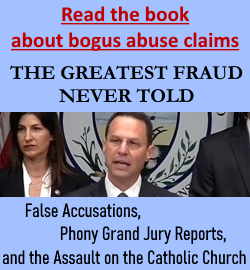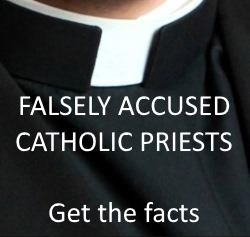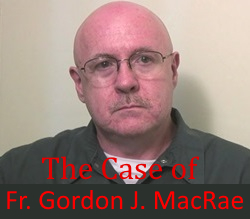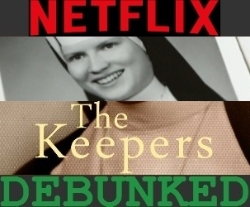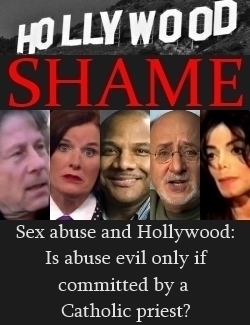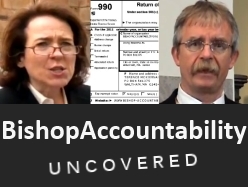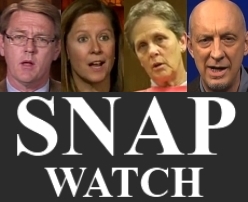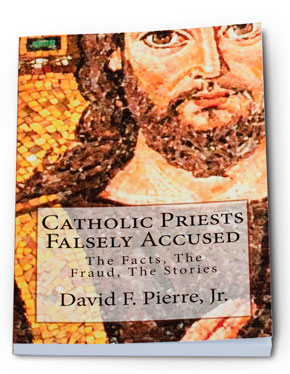While we must never cease demanding compassion and justice for all victims of clergy abuse, there is strong evidence to believe that the recent high-profile Philadelphia grand jury report has unfairly maligned the Catholic Church.
No media outlets have taken note of the report's glaring contradictions, notable omissions, and unfair characterizations of Church officials. The report also routinely assigns the most sinister motives to actions by archdiocesan employees, even though an objective assessment would conclude otherwise.
For example:
1. The grand jury report slams the Philadelphia archdiocese by saying it had "conducted non-investigations that predictably failed to establish priests' guilt."
This charge is patently untrue. In fact, for a number of years now, Philadelphia has maintained a high-profile web page that publicly posts the names, pictures, and assignments of those clerics whom the archdiocese has found to be guilty of abuse. The list is extensive and spans the removal of priests over the past several decades. (In fact, SNAP, the so-called victims' advocacy group that relentlessly criticizes the Church, has publicly praised Philadelphia on numerous occasions for being among the few dioceses that have such an accessible list. (2008))
The archdiocese's web page is clear-cut evidence that the Church in Philadelphia has in fact investigated several priests, found misconduct to be true, and laicized offenders.
In other words, the report's claim of "non-investigations" by the archdiocese is clearly contradicted by historical facts.
2. The report heralds itself as uncovering "new" information, yet the report spends several pages outlining cases allegedly involving Rev. Edward Avery. (Although the report is 128 pages long, the name “Avery” appears 162 times.)
Most readers of the report would be unaware of the fact that the media already widely reported the history of Fr. Avery back in 2003, and the Church laicized him in 2006.
In other words, the Church already removed Rev. Avery from ministry even before the first Philadelphia grand jury report in 2005. Meanwhile, the latest report provides nothing revelatory about Avery, except for the fact that another accuser came forward in 2009 to claim abuse by the cleric in the late 1990's. (This accuser, "Billy," has claimed that three men, two priests and a teacher, abused him.)
3. In a large section of the report, the grand jury makes strong objections to the fact that the archdiocese conducted its own investigations into abuse allegations. The jury forcefully attacks archdiocesan officials, claiming that they "hounded [victims] to give statements" and "used investigations and intimidation to silence victims and fend off lawsuits."
The characterization of "hounding" and "intimidating" victims is simply unfair and unwarranted. There is no doubt that it is painful for many victims to recount episodes of their abuse. However, it should not be characterized as an "attack on the victim" when Church officials ask for details about an episode, especially if the result of the investigation often involves the removal of a previously unblemished priest and a very sizable monetary settlement.
When a person comes forward decades after an alleged incident, it is often outside the statute of limitations, rendering an investigation by law enforcement officials highly unlikely. Investigations, therefore, are often left in the hands of the Church.
The Church has every right to look into the veracities of allegations. Although the grand jury states that the Church has this right to defend itself, it seems to strongly object whenever the Church does exactly that, and it assigns the most sinister and mean-spirited motives when Church officials simply seek to gather information.
The grand jury is unfair in this regard. It adopts a tone throughout its report that priests should be assumed guilty and settlements awarded with "no questions asked."
In one episode that the report relays, the jury portrays archdiocesan officials as grossly insensitive because when they went to question an accuser about an abuse claim, the accuser was "high on heroin." Hold on a sec. Why would this be the fault of the archdiocese?
4. As an example of a case that supposedly contains "substantial evidence" of abuse, the report profiles the case of Rev. Joseph DiGregorio. A woman came forward in 2005 to accuse the cleric of molesting her in "1967 or 1968." With no other allegations against him in over four decades as a priest, a Review Board concluded back in 2006 that "evidence obtained through the investigative process was not sufficient to substantiate" the single allegation against the cleric.
The report takes strong issue with the archdiocese's 2006 decision to return Fr. DiGregorio to ministry. Yet a closer look reveals that this accused priest could very well be innocent, rather than guilty.
After the grand jury released its report last month, the archdiocese re-suspended Fr. DiGregorio (along with two other priests the report profiled). Rather than bow to public pressure, Fr. DiGregorio forcefully went to the media to declare his innocence. On February 18, 2011, the priest appeared live on The Dom Giordano Show on Talk Radio WPHT 1210AM:
"In my almost 45 years of me being a priest my character and integrity have never been questioned. Almost 20 of those 45 years were spent as an army chaplain in the United States Army. I was deployed in Operation Desert Shield, Desert Storm for almost a year, and again in Operation Iraqi Freedom for 10 months.
"I love my country, I love my church. I am not intimidated by false accusations against my character. I am, however, angry, very angry, and I intend to fight these accusations with every legal means at my disposal. I applaud and support any organization or group of people, including SNAP, that seeks to protect minors against any abuse, sexual or otherwise, by anyone. I also applaud those who seek the truth with honesty …
"Every statement [the accuser] made concerning me is an absolute lie, completely and totally a lie. I never once touched her. I never once groped her or did anything inappropriate. I was never in her company alone. The only times I saw her was when she came to the rectory to see [another priest]."
The priest also cited reported inconsistencies in his accuser's allegations.
Yet a reading of the grand jury report would leader an observer to believe that Fr. DiGregorio committed abuse without a doubt. Among the little evidence that the report provides is the news that the cleric reportedly failed a polygraph test.
However, the jury left out an important element regarding Fr. DiGregorio's polygraph. As the cleric said on the radio:
"The [report and the local newspaper] failed to mention that I requested the polygraph test to establish my innocence. The test was administered in a Holiday Inn in Allentown, PA by an archdiocesan-appointed investigator. Needless to say how upset I was when the results of that test indicated that I was not telling the truth. [However,] a review of the transcripts of the test was [later] made by two polygraph experts with more than 30 years combined experience in administering and reading polygraphs. Their conclusion in reading the results of that test were [that] at best the test was 'inconclusive,' and at worst, it was wrong."
Fr. DiGregorio makes a convincing case for his innocence.
If the Fr. DiGregorio case is among the most egregious that the jury could profile, it does not say much for the veracity of the claims against the other three dozen "credibly accused" priests that the jury claims were in active ministry.
5. Throughout its report, the jury does not present charges of abuse as "alleged" incidents. It flat-out portrays them as undeniable fact. Allegations are automatically assumed to be true. And the jury has no qualms about using graphic language and stomach-turning descriptions to portray accused clerics in the most guilty light.
Yet in relaying the case of Rev. Charles F. Engelhardt, the jury makes no mention of the fact that the priest had received no allegations of wrongdoing whatsoever in over three decades of ministry until 2009, when "Billy" (the one "high on heroin") came forward to say that the cleric brutally sexually attacked him on a number of occasions after Masses a decade earlier.
The report presents the uncorroborated allegations against Fr. Engelhardt as undeniable truths, yet the priest vehemently denies the charges against him. A press statement from Engelhardt's order said:
"Father Engelhardt strongly denies these charges and claims his innocence. Prior to this incident, there had never been a complaint against Father Engelhardt in his more than 40 years of Oblate life. I feel deep concern both for the man claiming this abuse and for Father Engelhardt. The protection of children does not need to compete with our respect for a man's reputation. While we work hard to ensure that every child with whom we work is safe, we also honor the dignity of any man claiming to be innocent. In this case, it is our hope the facts will bring the truth to light."
By the way, almost no major media outlet has reported Fr. Engelhardt's denials.
——
There is a lot more one can point out with regards to the problematic Philadelphia report, but in the interest of brevity, we'll leave it at this.
Back in 2005, after the release of the first grand jury report, Philadelphia Church officials fired back, claiming the report was "a vile, mean-spirited diatribe against the church" and "a sensationalized, lurid and tabloid-like presentation of events."
Indeed, this latest report is also mean-spirited. It is difficult to swallow the jury's recommendation that the Church "should partner with victim organizations such as Survivors Network of those Abused by Priests (SNAP)," especially in light of the fact that SNAP has chronically shown itself to be an untrustworthy organization.
As the late Pope John Paul II declared, "There is no room in the priesthood for those who abuse children." And as Pope Benedict has said, we must rid the Church of its "filth."
Indeed, many clerics in the Philadelphia archdiocese wrecked deep harm on innocent youth and shattered numerous families. We must continue to demand compassion and justice for victims.
However, we should not shy away from speaking out when the Church is unjustly profiled. While misleading the public with claims that are not forthcoming and fair, the high-profile Philadelphia report ultimately exposes itself as an agenda-driven project designed to create maximum damage and embarrassment to the Catholic Church.
